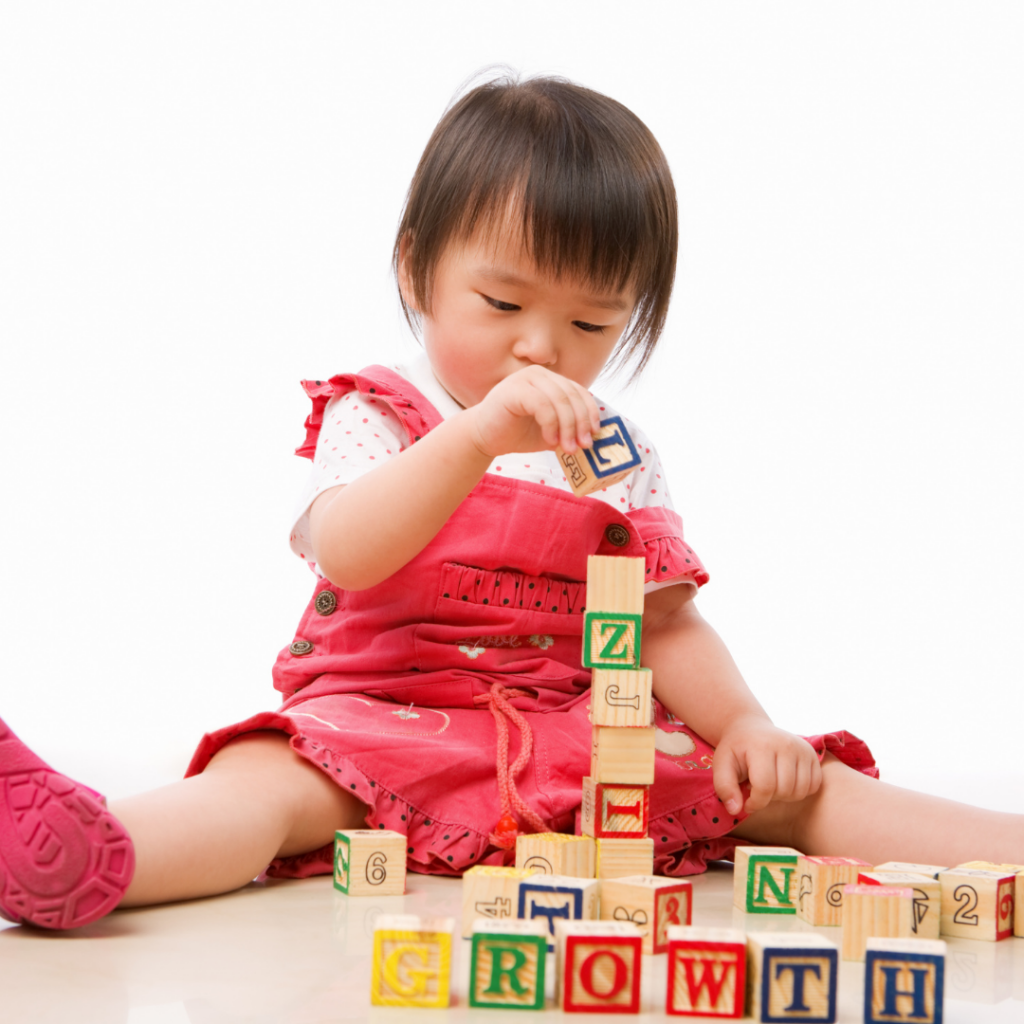There could be a myriad of different reasons why your toddler may not be talking as much as you’d expect based on their age. Rest assured, once the speech development delay has been identified, there are options to help your child reach the appropriate developmental milestones.
A parent or a Speech Language Pathologist often will need to do a little digging to find the ‘why.’ In fact, what parents often think of as a “speech delay” could be caused by a number of different contributing factors. Below are some possible clues to help parents and professionals parse out the underlying causes of the developmental delay:
Hearing
Hearing difficulties are very common in young children and can be related to ear infections or fluid in their ears. If you can’t hear, you can’t copy words! This might look like children ‘ignoring’ you or children not responding to noises or their names. Most pediatricians can do a hearing screening or check for fluid build-up. If your child’s doctor has concerns, they will send you to an audiologist to take an in-depth look at your child’s hearing. This should be one of the first problems to rule out when it comes to a speech or language delay.

Articulation
An articulation delay looks like difficulty making the correct sounds to put into words. Speech sounds develop at different times, so some sound errors are age-appropriate. An articulation delay might look like this:
- A child understands what you say, they will point or follow directions, but they say very few sounds or words.
- Not saying p, b, m, h, and w the right way in words most of the time between 1-2 years (ASHA, n.d.)
- Not saying k, g, f, t, d, and n the right way in words most of the time between 2-3 years. (ASHA, n.d.)

If your child is difficult to understand, even to people who know him or her well, this could also indicate an articulation delay. Overall, children should have speech clarity in increasing amounts as they get older. As a general guideline:
At age 1, 25% of their speech should be understood by strangers
Age 2, 50% of their speech should be understood by strangers
Age 3, 75% of their speech should be understood by strangers
Age 4, 100% of their speech should be understood by strangers
(Bowen, 2021)
Language
Language is made of the words and gestures we use to share ideas and get things we need. A language delay may look like a child saying only a few words or no words at all, difficulty following directions, or understanding what people tell them. Below is a more expansive list and corresponding ages we typically see these skills.
Language Development: Birth-3 months
Not smiling or playing with adults
Language Development: 4-7 months
Not babbling
Language Development: 7-12 months
Making only a few sounds. Not using gestures, like waving or pointing.
Language Development: 7 months-2 years
Not understanding what others say
Language Development: 12-18 months
Saying only a few words
Language Development: 1½-2 years
Not putting two words together
Language Development: 2 years
Saying fewer than 50 words
Language Development: 2-3 years
Having trouble playing and talking with other children
Language Development: 2½-3 years
Having problems with early reading and writing. For example, your child may not like to draw or look at books
(ASHA n.d.)
“They’re just not talking,” or “They’re just being stubborn.”
Parents occasionally mistake delayed speech and language delay as a child choosing not to use their words. This would be considered Elective mutism which is not common. While all children certainly come with their own unique personality quirks, those traits are different from a child’s ability to meet needs through communication.
If your child has said a word in the past but won’t use it every single time, they might still be learning and can’t access that word all the time. If your child had words and has lost them or other skills, that would be worth an evaluation by a trained speech therapist.

Why You Should Not ‘Wait and See’
Family, friends, and even pediatricians might counsel worried parents to ‘wait and see’ when dealing with speech delays. While many children can catch up on their own, there is a significant portion of children may need speech therapy to catch up. For these children, taking a ‘wait and see’ approach wastes valuable time. When you identify speech delays, starting speech therapy services during a phase in a child’s life when brain and speech development is occurring at an extremely rapid rate is ideal and recommended.
Early intervention, when speech delays are first noticed, can help children improve language skills and catch up before kindergarten, which will ensure they are ready to learn on par with their peers.
Delaying services, even for six months or a year, introduces unnecessary risk to a child’s development if a bona fide speech delay is present. On the other hand, there is no risk in seeking out an evaluation from a skilled professional such as a Speech Pathologist, as they will not recommend speech therapy or services if they are not warranted. Instead of risking a delay in services, why not just take a look?
What to expect at my child’s evaluation?
There are a few steps that go into evaluating the speech development of a child. First is the parent/caregiver interview and then the evaluation.
The Parent/Caregiver Interview is a crucial part of the evaluation process. During the interview, you, as the parent/caregiver, will be asked questions about the child’s developmental history and your concerns about your child’s speech development.
A Speech and Language Pathologist (SLP) relies on the parents and caregivers to give as much detail as possible. The interview provides the SLP with a deep understanding of the child’s communication style and what may influence their speech development.
Below we have outlined a few of the top questions the SLP may ask during the Parent/Caregiver Interview.
Medical history:
- Is there a history of ear infections?
- Did you have any complications during pregnancy/labor?
- Was your child a premature birth?
- Is there a family history of speech and language issues?
- Was a newborn hearing screening completed?
- Was hearing loss identified?
- Have there been any previous visits to A Speech and Language Pathologist?
Developmental milestones:
- When the child accomplished the main developmental milestones? Please note when the child started doing the following things; rolling, sitting, crawling, walking.
- Which language milestone has your child reached? Babbling, the first word, first two-word combo, recognize letters.
Communication concerns:
- What are your top communication concerns? Please make note if your child finds any of the following a challenge; unclear speech, limited vocabulary, a problem with combining words, voice issues, little peer interaction.
The evaluation of your young child should feel a bit more like playtime for them. The SLP will use an informal conversational style with your child and sometimes even just simply observe your child as they play. The SLP will ask your child to name objects in the room or point pictures and ask questions to encourage them to use their language skills.
It is beneficial to bring a few familiar toys or objects that the child likes to talk about, this will put your child at ease, but it will give the SLP a conversation starter that your child is excited to discuss.
A final note about the assessment process, it is essential that the parent/caregiver quietly observes and doesn’t help the child communicate. Believe us; we understand how hard it can be to see your child struggle with verbal interaction. For the success of the evaluation, you must let your child work to communicate with the SLP on their own.
Milestone Pediatric Therapy Clinic offers clinic and in-home early intervention services. We are currently accepting new patients!
If you have any concerns about your child’s speech development or language, feel free to contact our office for a free consultation.

References
ASHA (n.d.) Early Identification of Speech, Language, and Hearing Disorders. Retrieved from https://www.asha.org/public/early-identification-of-speech-language-and-hearing-disorders/ on April 5th, 2021.
Bowen, C. (2011). Table1: Intelligibility. Retrieved from http://www.speech-language-therapy.com/ on April 5th, 2021.
